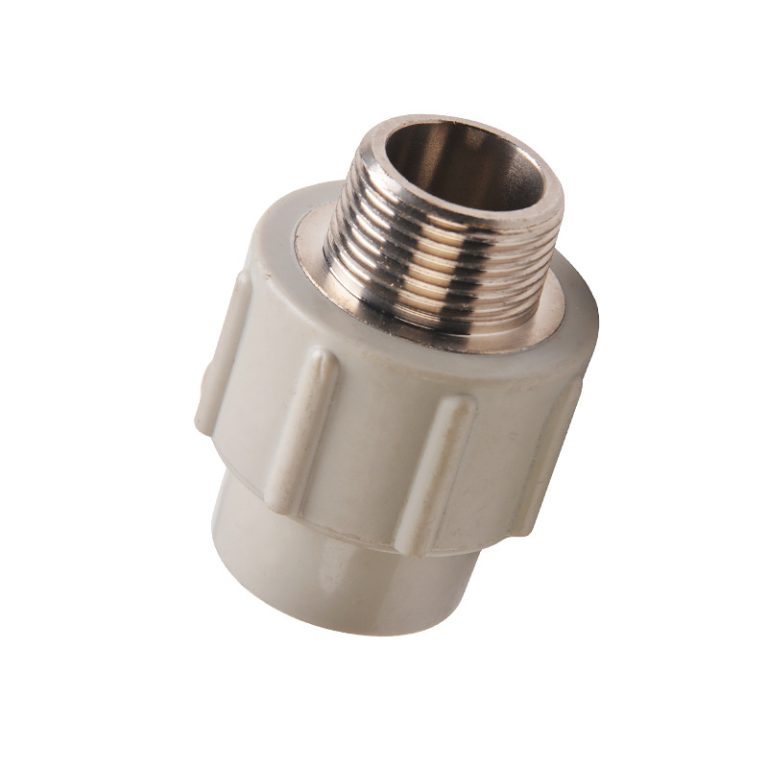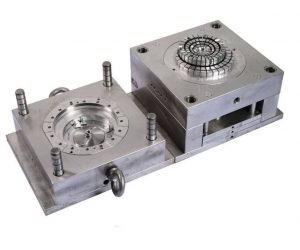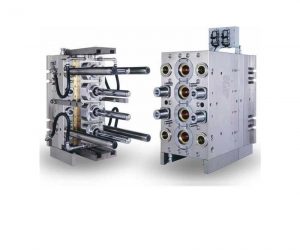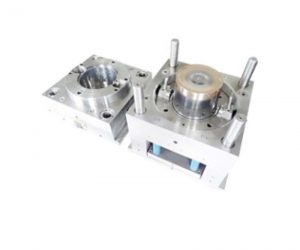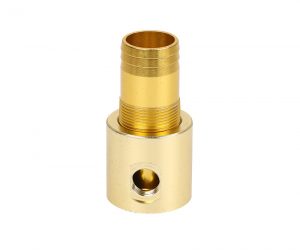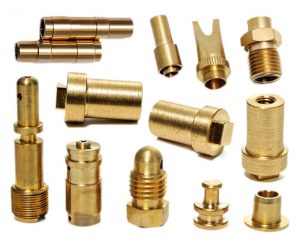The paradigm of manufacturing has undergone a radical, almost fractal, shift with the advent of metal additive manufacturing (AM), also known as 3D metal printing. No longer a niche pursuit, it represents a disruptive force, fundamentally altering production methodologies and unlocking unprecedented design freedoms. This analysis delves into the cutting edge of metal AM, exploring its transformative impact across diverse sectors and the inherent complexities driving its evolution.
Beyond Incrementalism: A Paradigm Shift in Fabrication
The transition from subtractive to additive manufacturing signifies a profound philosophical change. Traditional methods, bound by the limitations of tooling and material removal, are being eclipsed by the generative capabilities of AM. This shift empowers the creation of topologically optimized geometries, previously unattainable through conventional techniques. This is not merely an incremental improvement; it's a fundamental restructuring of the design-to-manufacture pipeline. The implications reverberate across the entire value chain, from material science to supply chain logistics.
The Crucible of Innovation: Core Metal AM Technologies
The landscape of metal AM is characterized by a dynamic interplay of competing technologies, each with its unique strengths and limitations. A nuanced understanding of these processes is crucial for effective application:
A. Direct Metal Laser Sintering (DMLS): Precision and Versatility in a Single Beam
DMLS, employing a high-power laser to iteratively fuse metallic powders, stands as a cornerstone of the AM revolution. Its precision and versatility allow for the fabrication of intricate, high-resolution components with exceptional dimensional accuracy. However, the inherent layer-by-layer deposition can introduce anisotropic material properties, demanding careful consideration of part orientation and post-processing strategies. The selection of appropriate laser parameters, powder bed management, and process monitoring are critical for ensuring consistent quality and minimizing defects.
B. Electron Beam Melting (EBM): High-Density Constructs in a Vacuum Crucible
EBM, utilizing a high-energy electron beam within a vacuum environment, offers distinct advantages in producing high-density parts with exceptional mechanical properties. The vacuum chamber mitigates oxidation and allows for the processing of reactive metals, such as titanium alloys, crucial for aerospace and biomedical applications. However, EBM's higher capital expenditure and slower build rates compared to DMLS necessitate careful consideration of cost-benefit analyses for specific applications. Furthermore, the inherent limitations in controlling the melt pool dynamics require sophisticated process control algorithms.
C. Beyond the Binary: A Diversifying Technological Ecosystem
The technological landscape extends beyond DMLS and EBM. Binder jetting, offering cost-effective solutions for large-scale production, and directed energy deposition (DED), enabling the creation of large-scale components and repair applications, represent alternative pathways. Each technology presents a unique set of trade-offs, demanding a case-by-case evaluation based on the specific design requirements, material selection, and economic considerations. The ongoing evolution of these processes, coupled with the emergence of hybrid techniques, promises further diversification and refinement of the AM ecosystem.
The Unfolding Impact: Transformative Applications Across Industries
The transformative potential of metal AM is not confined to a single sector. Its impact is felt across diverse industries:
- Aerospace: Lightweight, high-strength components with complex internal geometries, enabling significant improvements in fuel efficiency and performance.
- Biomedical: Personalized implants and surgical tools with intricate designs tailored to individual patient anatomy.
- Automotive: Lightweighting of vehicle components, leading to improved fuel economy and enhanced performance.
- Energy: Advanced designs for turbines and other energy-related components, optimizing efficiency and durability.
The continued development and refinement of metal AM technologies, coupled with advancements in materials science and process control, promise to further expand its reach and solidify its position as a cornerstone of future manufacturing. The fractal nature of its impact, extending across multiple scales and sectors, ensures its ongoing relevance and transformative power.
Materials in Metal 3D Printing
A. Commonly Used Metals
The range of metals used in 3D printing has expanded significantly, with a growing number of service providers offering access to a variety of materials. Some of the most commonly used metals in additive manufacturing include stainless steel, titanium, aluminum, cobalt-chrome, and nickel-based alloys, each with its own unique properties and applications.
B. Alloys and Mixtures
Beyond the use of pure metal powders, metal 3D printing also enables the creation of custom alloys and material mixtures, tailored to specific performance requirements. This allows manufacturers to optimize the mechanical, thermal, or corrosion-resistant properties of their parts, further expanding the capabilities of metal additive manufacturing.
C. Novel Materials Research
The field of metal 3D printing is witnessing continuous material advancements, with researchers and manufacturers exploring the use of exotic metals, ceramics, and even metal-matrix composites. These novel materials hold the potential to open up new frontiers in additive manufacturing, catering to specialized applications and pushing the boundaries of what is possible in modern industrial production.
Metal Additive Manufacturing: A Paradigm Shift in Material Fabrication
The advent of metal additive manufacturing (AM), encompassing techniques such as Direct Metal Laser Sintering (DMLS) and Electron Beam Melting (EBM), represents a profound departure from traditional subtractive manufacturing paradigms. This shift is driven by the technology's unique capabilities, which unlock unprecedented design freedom and operational efficiencies, thereby revolutionizing multiple industrial sectors.
Unleashing Design Complexity and Topological Optimization:
Metal AM transcends the limitations of conventional machining, enabling the fabrication of components with geometries of previously unattainable intricacy. This extends beyond mere aesthetic considerations; the capacity to engineer complex internal lattice structures allows for significant weight reduction without compromising structural integrity. This topological optimization, achieved through sophisticated algorithms and iterative design processes, is particularly impactful in applications demanding high strength-to-weight ratios, such as aerospace and high-performance automotive components. The resulting parts exhibit superior performance characteristics, often exceeding those achievable through traditional methods. Furthermore, the ability to integrate multiple functionalities within a single component, through embedded channels, cavities, and customized surface textures, further enhances design efficiency and reduces assembly complexity.
Accelerated Product Development Cycles and Agile Manufacturing:
The inherent additive nature of metal AM drastically reduces lead times compared to conventional manufacturing processes. The elimination of tooling, coupled with the ability to rapidly iterate on designs through digital prototyping and direct part fabrication, significantly shortens the product development lifecycle. This agility is paramount in today's rapidly evolving market landscape, enabling manufacturers to respond swiftly to changing demands and achieve a competitive advantage through faster time-to-market. Furthermore, the ability to produce low-volume, highly customized parts on demand eliminates the need for large-scale tooling investments, making it economically viable for niche applications and personalized products.
Transformative Applications Across Diverse Industries:
The impact of metal AM is far-reaching, permeating diverse sectors with its transformative capabilities:
- Aerospace: The aerospace industry, driven by the relentless pursuit of weight reduction and performance enhancement, has embraced metal AM for the creation of critical flight components, including engine turbines, lightweight structural elements, and complex heat exchangers. The ability to manufacture near-net-shape parts minimizes material waste and machining requirements, resulting in substantial cost savings and improved overall efficiency.
- Automotive: The automotive sector is leveraging metal AM to produce high-performance components, customized tooling, and lightweight chassis elements. The ability to create intricate geometries and optimize internal structures leads to enhanced vehicle performance, fuel efficiency, and safety. Furthermore, the technology facilitates the rapid prototyping and testing of new designs, accelerating the development of innovative automotive technologies.
- Biomedical Engineering: Metal AM is revolutionizing the biomedical field, enabling the fabrication of patient-specific implants, prosthetics, and surgical instruments with unprecedented anatomical accuracy. This personalized approach to healthcare improves treatment outcomes and enhances patient quality of life. The ability to create intricate porous structures for improved osseointegration further enhances the performance and longevity of implants.
The ongoing advancements in metal AM technology, coupled with the increasing sophistication of design software and material science, promise to further expand its capabilities and applications, solidifying its position as a transformative force in modern manufacturing.
The Evolving Landscape of Metal Additive Manufacturing: A Critical Analysis
Metal additive manufacturing (AM), while promising transformative potential across diverse sectors, remains a complex technological domain fraught with challenges and ripe with opportunities. A nuanced understanding of the inherent complexities is crucial for successful implementation and widespread adoption.
Economic and Material Constraints: A Shifting Equilibrium
The initial capital expenditure for metal AM systems represents a significant barrier to entry for many manufacturers, particularly SMEs. Furthermore, the cost of specialized metal powders, often exhibiting high material variability impacting build consistency, remains a substantial operational expense. While economies of scale and material innovations are gradually mitigating these costs, the economic viability remains a critical factor influencing adoption rates and market penetration. The unpredictable nature of material pricing, subject to global supply chain fluctuations and geopolitical instability, further complicates long-term cost projections and necessitates robust risk management strategies.
Design for Additive Manufacturing (DfAM): Beyond Traditional Paradigms
DfAM necessitates a fundamental shift in design philosophy. The inherent limitations of AM processes, such as support structure requirements, anisotropic material properties, and limitations on overhang angles, demand a departure from traditional subtractive manufacturing paradigms. Optimization algorithms, leveraging advanced simulation tools and generative design techniques, are increasingly crucial in mitigating these constraints. However, the complexity of these algorithms and the need for specialized expertise present significant hurdles to widespread adoption. Furthermore, the iterative nature of DfAM necessitates robust design validation and verification processes to ensure functional performance and structural integrity.
Post-Processing: A Critical Determinant of Quality and Functionality
Post-processing operations, encompassing heat treatments, machining, and surface finishing, are often indispensable for achieving the desired mechanical properties, dimensional accuracy, and surface quality. These processes significantly impact the overall cost and lead time, and their efficacy is directly correlated to the quality of the initial AM build. The development of integrated post-processing techniques, minimizing handling and maximizing efficiency, is a critical area of ongoing research and development. Furthermore, the variability inherent in post-processing methods necessitates rigorous quality control protocols to ensure consistent outcomes.
Quality Assurance and Standardization: Building Trust and Reliability
Ensuring the reliability and safety of metal AM parts, especially in critical applications like aerospace and medical implants, demands rigorous quality assurance protocols. This necessitates the implementation of comprehensive testing and validation methodologies, encompassing both destructive and non-destructive techniques, to verify mechanical properties, dimensional accuracy, and microstructural integrity. The development and harmonization of industry standards, such as those promulgated by ASTM and ISO, are essential for establishing a framework of trust and ensuring interoperability across different AM systems and materials. However, the rapid evolution of AM technologies necessitates a continuous update and refinement of these standards to keep pace with technological advancements.
Future Trajectories: Technological Convergence and Sustainable Practices
The future of metal AM is characterized by a confluence of technological advancements, including the emergence of hybrid manufacturing processes, the development of novel metal alloys with tailored properties, and the integration of artificial intelligence (AI) in process optimization and quality control. Sustainability considerations are increasingly influencing the development of environmentally friendly AM processes, focusing on the use of recycled materials, closed-loop material management, and energy-efficient production methods. The integration of AM into smart factory ecosystems, leveraging data analytics and the Internet of Things (IoT), promises to further enhance efficiency, flexibility, and responsiveness. However, the realization of this vision requires addressing the complexities of data security, interoperability, and the development of robust digital twins for accurate process simulation and optimization. The unpredictable nature of technological innovation and the dynamic nature of the global landscape necessitate a proactive and adaptive approach to navigate the evolving challenges and opportunities within the field of metal additive manufacturing.
The Disruptive Trajectory of Metal Additive Manufacturing: A Technological and Socioeconomic Analysis
A. Metal 3D Printing: A Paradigm Shift in Industrial Production
Metal additive manufacturing (AM), encompassing techniques like Direct Metal Laser Sintering (DMLS) and Electron Beam Melting (EBM), represents a fundamental paradigm shift in industrial production. Its capacity to fabricate intricate, functionally graded, and highly customized metal components transcends the limitations of traditional subtractive manufacturing methods. This technology is not merely an incremental improvement; it is a catalyst for disruptive innovation, driving advancements in design freedom, material utilization efficiency, and supply chain dynamics. The implications extend beyond mere cost reduction, impacting product performance, lifecycle management, and overall industrial competitiveness on a global scale. The inherent ability to produce near-net-shape components minimizes material waste, a critical factor in a resource-constrained future.
B. Global Manufacturing: A Landscape Undergoing Additive Transformation
The widespread adoption of metal AM is poised to fundamentally reshape the global manufacturing landscape. The decentralized nature of the technology allows for localized production, mitigating reliance on centralized, geographically constrained supply chains. This fosters a more resilient and responsive manufacturing ecosystem, empowering smaller enterprises and fostering regional economic diversification. However, this transformation is not without its challenges. The integration of AM into existing production workflows requires significant investment in both hardware and skilled labor, presenting a barrier to entry for some businesses. Moreover, the standardization of AM processes and materials remains an ongoing challenge, impacting interoperability and the overall scalability of the technology. The strategic implications for global manufacturing competitiveness are profound and require careful consideration of both opportunities and potential risks.
FAQs: A Deeper Dive into Metal Additive Manufacturing
1. DMLS vs. EBM: A Comparative Analysis of Energy Sources and Process Environments
The distinction between DMLS and EBM extends beyond the mere difference in energy sources (laser vs. electron beam). DMLS, operating in an inert atmosphere, offers greater flexibility in material selection, accommodating a broader range of alloys. EBM, utilizing a high-vacuum environment, excels in producing components with superior microstructural homogeneity and reduced porosity, particularly beneficial for demanding applications requiring high fatigue strength. The choice between these techniques is dictated by a complex interplay of material properties, desired component characteristics, and overall cost considerations.
2. Material Selection in Metal AM: Properties, Applications, and Limitations
The spectrum of printable metals extends beyond commonly cited materials like stainless steel, titanium, aluminum, cobalt-chrome, and nickel-based alloys. Emerging research focuses on high-entropy alloys and functionally graded materials, pushing the boundaries of material performance. Each material selection necessitates a thorough understanding of its inherent properties, including yield strength, ductility, corrosion resistance, and biocompatibility, to ensure optimal component performance and longevity within the intended application. Furthermore, the inherent anisotropy of AM-produced parts must be carefully considered during design and post-processing stages.
3. Aerospace and Biomedical Applications: Exploiting the Unique Capabilities of Metal AM
The transformative impact of metal AM is particularly evident in aerospace and biomedical sectors. The ability to produce lightweight, high-strength components with complex internal geometries revolutionizes aircraft design, enhancing fuel efficiency and structural integrity. In the biomedical field, the capacity to create patient-specific implants and prosthetics represents a paradigm shift in personalized medicine, improving patient outcomes and reducing recovery times. However, the stringent regulatory requirements and rigorous quality control protocols inherent in these industries demand meticulous attention to detail throughout the entire AM workflow.
4. Challenges and Considerations in Metal AM Adoption: Navigating the Technological and Economic Hurdles
The adoption of metal AM is not without its challenges. High capital expenditures for equipment, the need for specialized expertise in design and post-processing, and the complexities of ensuring consistent part quality represent significant hurdles. Furthermore, the development of robust quality control methodologies and the establishment of standardized testing protocols are crucial for widespread industry acceptance. Addressing these challenges requires a collaborative effort between researchers, manufacturers, and regulatory bodies.
5. The Convergence of Metal AM, Digital Manufacturing, and Smart Factories: A Synergistic Future
The integration of metal AM into digital manufacturing ecosystems, leveraging data analytics, predictive modeling, and IoT technologies, promises a transformative impact on industrial efficiency and responsiveness. This convergence enables real-time monitoring of AM processes, predictive maintenance of equipment, and optimized production scheduling, leading to a more agile and sustainable manufacturing paradigm. The future of manufacturing is not simply about additive manufacturing; it is about the seamless integration of AM within a broader digital ecosystem, creating a truly intelligent and responsive industrial landscape.
